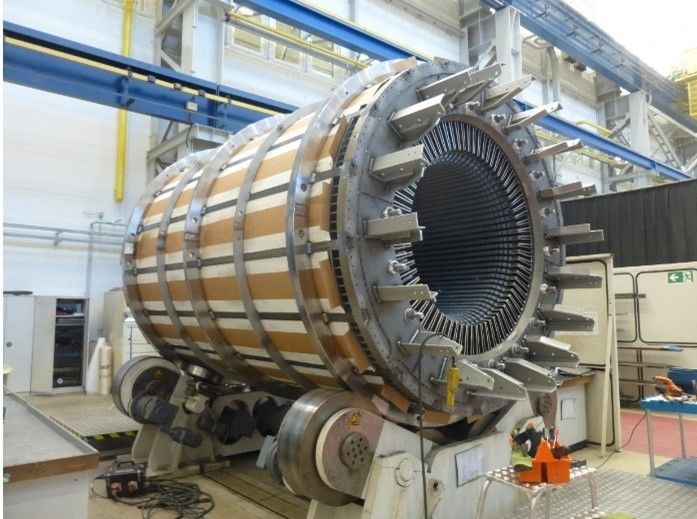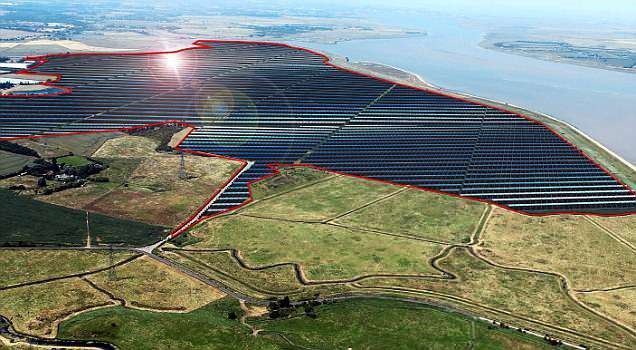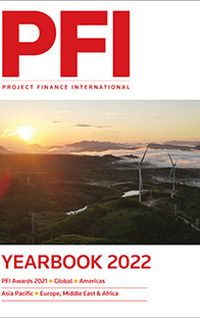The founders of Quinbrook Infrastructure Partners have been investing in power markets since the early 1990s and renewables since 1997. Armed with that experience to focus on lower carbon and renewable energy infrastructure investment and operational asset management, Quinbrook finds itself in the right place at the right time, at the centre of one of the biggest industries on the planet. By Nick Herbert.
A specialist investor and asset manager in renewables, grid support, infrastructure and storage, Quinbrook Investment Partners was established in July 2015 by founders David Scaysbrook and Rory Quinlan. They had previously worked in the clean energy division of Capital Dynamics.
Quinbrook is led and managed by a senior team of power industry professionals who have collectively invested more than US$8.2bn in energy infrastructure assets since the early 1990s, representing over 19.5GW of power supply capacity. Quinbrook’s managed portfolio companies have grown to employ more than 350 people today working in various levels within its businesses in the US, UK and Australia. Its investment and asset management team has offices in Houston, London, Jersey, Sydney and the Gold Coast of Australia.
“As a specialist investment manager, we are looking to bring our prior industry pedigree to what is essentially power investing,” said David Scaysbrook. “We have three decades of power industry experience that can be applied to the larger scale rollout of assets for institutional investors, primarily in carbon reducing or abating projects in the power sector.”
Mega solar twins
The scale of its projects is impressive, with Quinbrook involved in two of the biggest solar developments seen on both sides of the Atlantic.
In May 2020, the Bureau of Land Management (BLM) and Department of the Interior approved the US$1.1bn 690MW Gemini Solar photovoltaic (PV) project in Clark County, Nevada. The solar PV plus 380MW storage project is under construction on 7,100 acres of BLM-administered land 53.1km north-east of Las Vegas.
Quinbrook has secured a sales contract of more than US$2bn with local utility NV Energy, part of Berkshire Hathaway Energy, which will buy 100 per cent of the power output under a 25-year power purchase agreement (PPA) that was cleared by the state's Public Utilities Commission in late 2019. The PPA is structured to store solar power during the day and discharge it in the 4pm to 9pm period across the "super peak" summer months of June to August.
In the UK, Quinbrook acquired the largest consented solar and battery storage hybrid project in the country – Cleve Hill in Kent, from Hive Energy. Construction of the £270m 376MW power and 150MW storage solar scheme, named Project Fortress, is expected to begin in the first half of 2022. The project is expected to improve security and reliability for the UK power grid.
Quinbrook plans to use project finance to fund the scheme and will seek to back the debt with a long-term power PPA. It has already spoken to utility and corporate PPA buyers and will bid out the capacity. Batteries in the storage element will have a two-hour duration and this part of the scheme could either by wrapped up in the PPA or used on the grid and connected to other ancillary services.
Big benefits, small sticks
Quinbrook does not restrict itself to large-scale projects, despite the benefits that accrue from these scaled developments.
“There are very tangible benefits from developing large projects, particularly in terms of preferred relationships with manufacturers and securing supply chains,” said Scaysbrook. “But in certain markets, very large scale projects are becoming scarcer as a lot of the better sites are already committed.
“So we also do smaller projects as part of our distributed energy solutions strategy,” he said.
The number of distributed and behind the meter schemes is growing rapidly as solar power generation gets cheaper and battery storage becomes more efficient. Businesses and industry are embracing new solar and storage technology to produce renewable power at their on-site locations, at factories or on the roofs of their manufacturing facilities.
“That’s what we call our 'brick by brick' business,” said Scaysbrook. “It takes a lot of little projects to make a big portfolio, but they give you very sticky customers over a very long period of time, so it's still a very good investment for our institutional clients. They also like the diversification our portfolio of distributed projects gives them.”

Active management, adding value
Quinbrook primarily manages closed-end funds for its investing partners. In March 2019, it closed a low carbon power fund, raising more than US$1.6bn in commitments from institutional investors including pension funds and insurance institutions from the US, the UK and Australia. But it also manages evergreen funds.
“We manage both types of fund structure,” said Scaysbrook. “But, at their core, they both have the same principle of active management and value add – whether that comes from us trying to create more value from managing the assets operationally or by developing and constructing, and managing those risks, in closed-end funds.”
The average hold period in its closed end funds is between five and eight years, according to Scaysbrook. Exits are realised after either de-risking the development stage assets or building vertical platforms.
“We've been doing more scaled platform building in our more recent funds,” said Scaysbrook. “Building large, vertically integrated enterprises that incorporate development teams and the operating assets as a business rather than just a set of assets.”
With limited exceptions, Quinbrook targets a return on its equity investments of mid-teens plus.
Quinbrook typically looks to own 100% of everything it invests in. It then establishes working partnerships with management teams or, at a project level investment such as Project Fortress; it controls all the decision-making around the project, but without a separate management team attached to it. “That gives us control of our own destiny and the destiny of the asset,” said Scaysbrook. “It's easier that way with our active investing style.”
Finance and off-takes
Just as the Gemini project in Nevada is the largest solar and battery storage project in US history, so the tax equity check, exceeding US$550m, is the largest ever written for a single US renewables project.
“The tax equity is the last piece in the overall financing,” said Scaysbrook. “Debt of about US$1bn for construction has already been secured. Given the project has a 25-year PPA with a Berkshire Hathaway owned utility, NV Energy, it's a very good credit story so the debt financing has been popular and very competitive.
“We're pleased with the terms we've been offered. We'll have about four lead arrangers and we're about to choose our syndicate of banks. We hope to have it all finalised by the end of the year.”
There remains a reasonable level of liquidity in the banking sector, depending on the project.
“There's definitely an aggressive US project financing market, even with merchant risk exposure. And if you've got good long-term offtake contracts, you will get a good, robust deal,” said Scaysbrook.
And offtake agreements are increasingly coming from corporate buyers as they break away from their captive utility relationships and procure renewables directly from project sponsors.
Not just sun power
Quinbrook’s investment strategy incorporates a broad scope of technologies and project sizes, but there is a common approach when it comes to the adoption of new technology.
“We take a relatively technology-agnostic view, so we develop expertise in technologies at given points in the cycle when we believe they have or will soon become either very price-competitive or very effective in terms of the amount of energy they can generate, or both. We did this, for example, with battery storage beginning in 2015,” said Scaysbrook.
In the past, that approach has seen the company invest across technologies for wind and solar, landfill-gas, fugitive coal-seam gas, hydro, biomass, and more recently, battery storage and synchronous condensors.
“It's a pretty broad palette,” said Scaysbrook. “We look at what the market needs at a given time.”
And that is not always new technology. Recently, it has invested in technology that's more than 100 years old. The new £37m Rassau synchronous condenser project in Ebbw Vale, South Wales, a project for the National Grid, is specifically designed to reinforce the grid with stability services. Construction of the facility, in partnership with Siemens, is scheduled for completion in Q4 2021.
“Synchronous technologies allow the grid to accommodate more weather-dependent renewable energy. They provide frequency stability,” said Scaysbrook. “That’s important, as weather variable renewables don’t provide the benefits that coal plants and gas plants provided to the grid.”
More breakthrough technologies are being embraced at the distributed or "behind the meter" level, such as the virtual power plant network developed alongside Tesla in South Australia.
“The Australian market is an early adopter of new and advanced technology,” said Scaysbrook. “We're trialling a lot of new things here like our virtual power plants, machine learning and artificial intelligence optimisation of battery storage, and our blockchain tracing of 24/7 renewables provenance for corporate customers.”
Blockchain tracing facilitates verification of where renewable energy is produced and where it is consumed in real time. These emerging technologies are being deployed and commercialised in its other markets.
In its most recent acquisition it bought Oxford-based Habitat Energy, an optimisation and trading platform for grid-scale battery storage. Habitat uses advanced machine learning and algorithmic capabilities to optimise the value of battery storage assets within deregulated power markets, both standalone and co-located with renewables. Quinbrook will support Habitat’s expansion into Australia and the US, where the initial focus will be on the ERCOT market in Texas followed by other US ISOs shortly after.
Green not brown horizons
The company’s latest strategy is a net-zero focused one with no fossil fuel exposure, compared with its previous low carbon power strategy, which saw it develop gas peaking projects around the UK to meet a critical market need for National Grid.
“We're only halfway through building the portfolio,” said Scaysbrook. “As a power industry investor, we lament the less informed cries for 100% renewables, because power systems just don't operate that way. We still need to have insurance in the form of these gas peaking assets to cover variable renewables, and we're providing a very valuable service to the UK grid. We have long-term 15-year contracts with the National Grid and the UK Government to build these assets.”
Low carbon is a legacy strategy, however, and its current and future ambitions will be completely geared to there being more demand, bankability, appetite, and acceptance of a zero-carbon strategy.
Quinbrook believes that through its specialist focus on building new infrastructure assets and businesses that support a sustainable, just transition and accelerated pathway to net zero, it is better able to protect and enhance the value of all capital.
“We're in an era now where we see the triangulation of impact, ESG and higher returns for the first time ever,” said Scaysbrook. “If you want higher value-add returns and you want impact, then you must invest in the development and construction of new assets that will help drive us to net zero.
“Buying an existing business or asset from somebody else does nothing incrementally to help decarbonise the power sector. Thinking that built and operating assets are "de-risked" relative to new build is a myth if you are buying those assets in super competitive auctions.”
To help educate investors in their appreciation of this risk/return triangulation in the pursuit of net zero, it recently added Fiona Reynolds to its advisory board. Reynolds, who will step down from her CEO position at Principles for Responsible Investors in December 2021, will guide Quinbrook’s strategies and impact initiatives in climate policy, ESG and responsible investment.

To see the digital version of this report, please click here
To purchase printed copies or a PDF of this report, please email gloria.balbastro@lseg.com

















